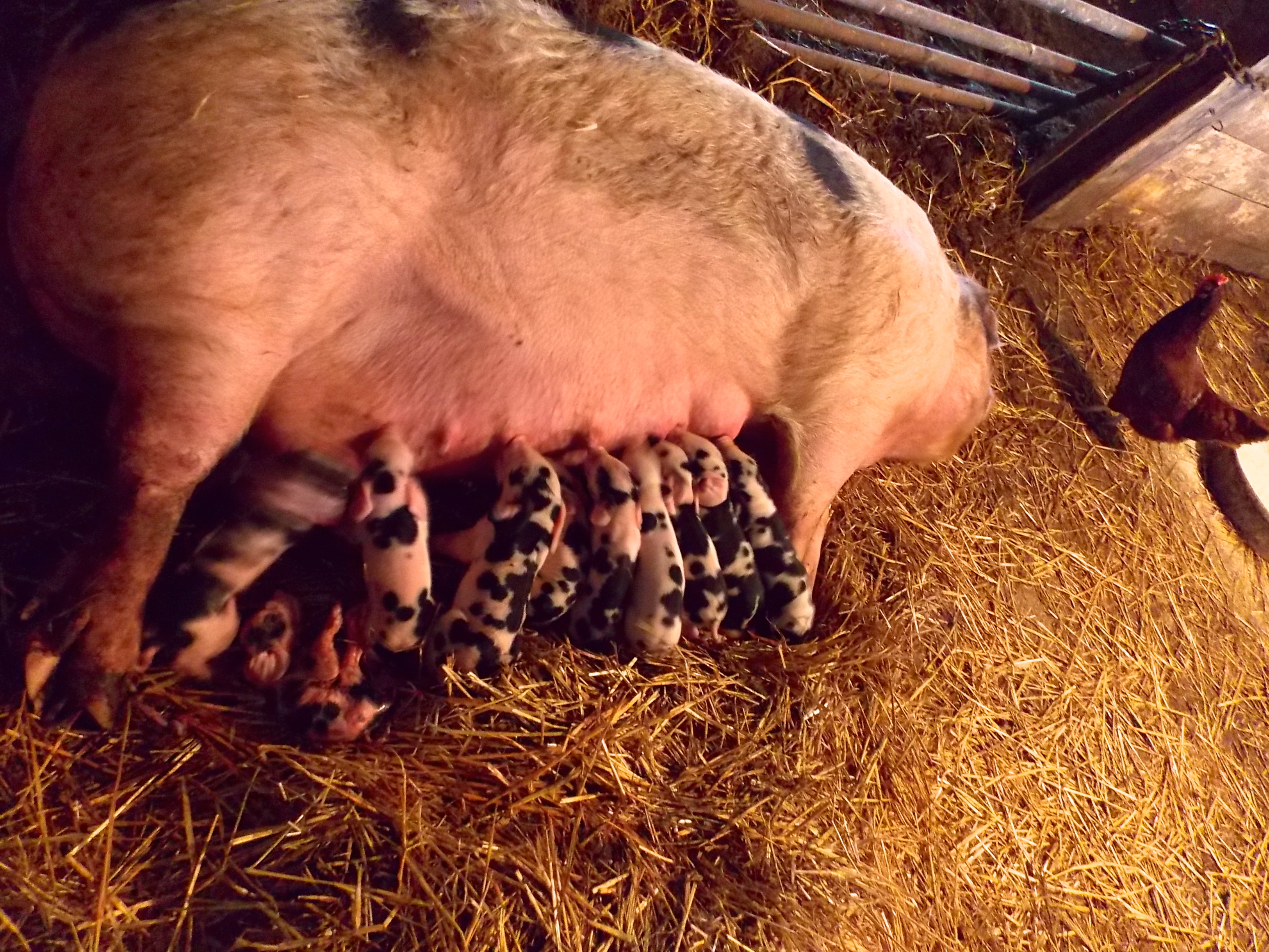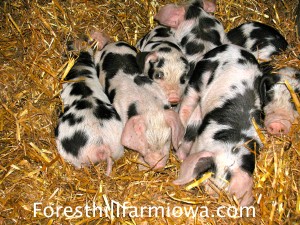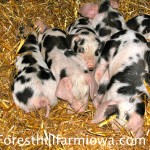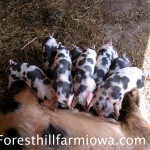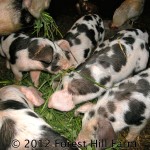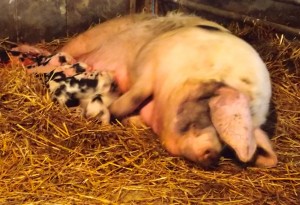
Good morning, piglets! The first of our sows farrowed Sunday morning. 10 healthy piglets were enjoying breakfast when I went to the barn. They'll stay inside for 8 - 10 days until they're big and mobile enough that eagles won't prey on them.
Our goal is to raise healthy hogs. We've been concerned about PEDV virus. The confinement hog operations in the area spread manure on the fields and there's always manure on the roads. We've been careful about washing the truck's tires and not allowing visitors for a few weeks to make sure there isn't any contamination brought to the farm. The experts say that PEDV is deadlier in the cold months, but we're not taking any chances. Also, we don't use a feed mix with blood plasma products, just grain and fresh pasture for our pigs. There's a possible link between feeding blood plasma and PEDV. Wasn't anything learned from Mad Cow Disease? Cows are herbivores, but someone had the bright idea to feed young calves bovine meat and bone meal. The hog industry feeds porcine plasma to young pigs that aren't old enough to start eating a grain based diet. I'm proud to go against the grain of conventional farming.

